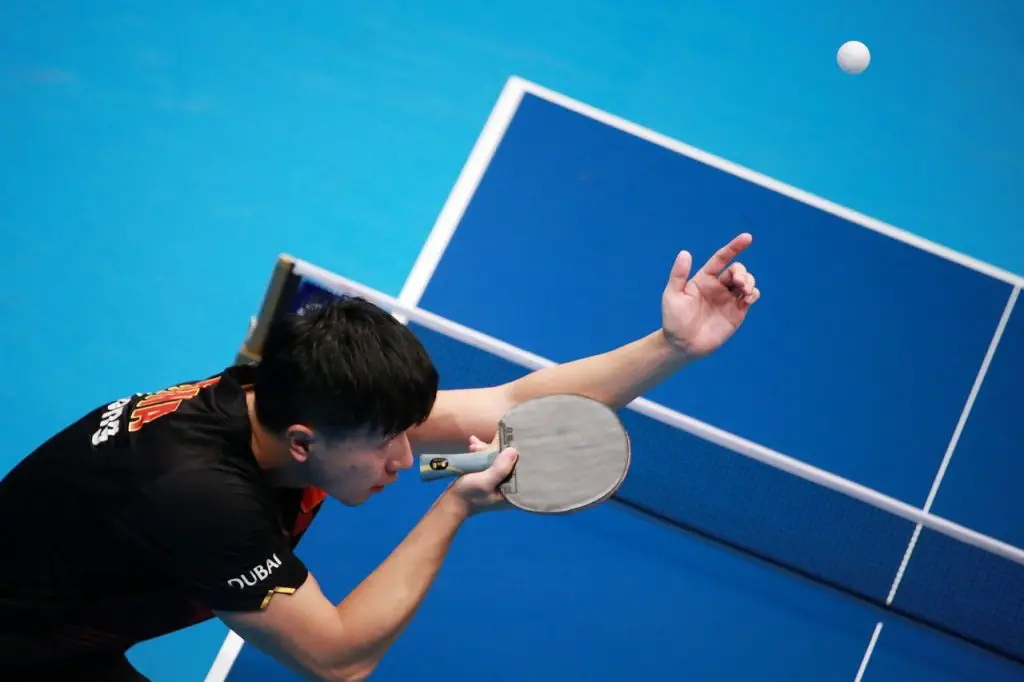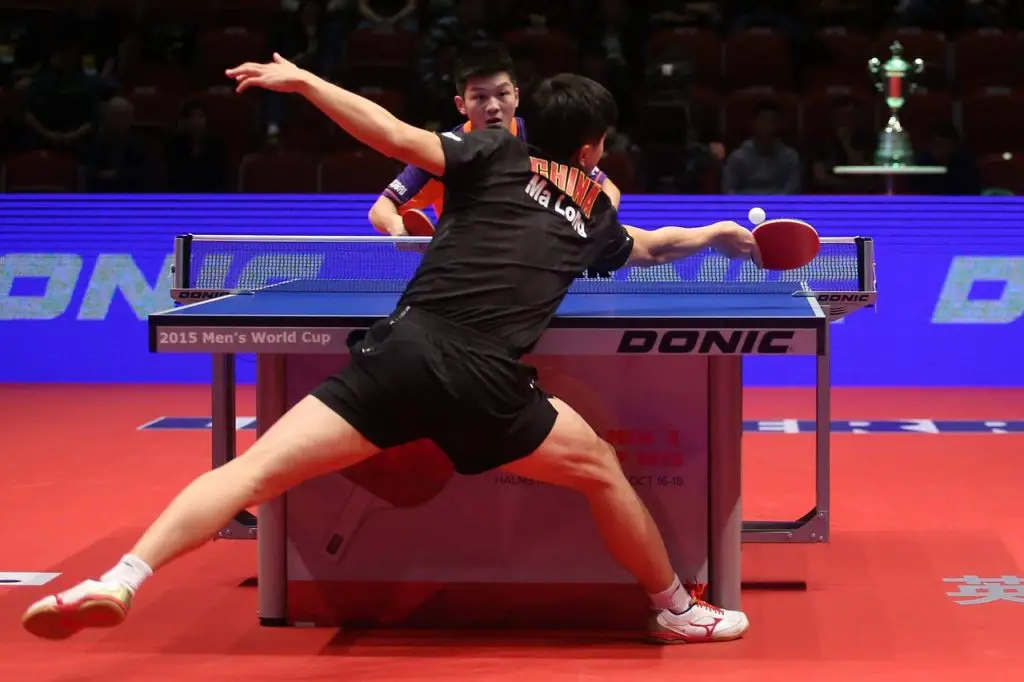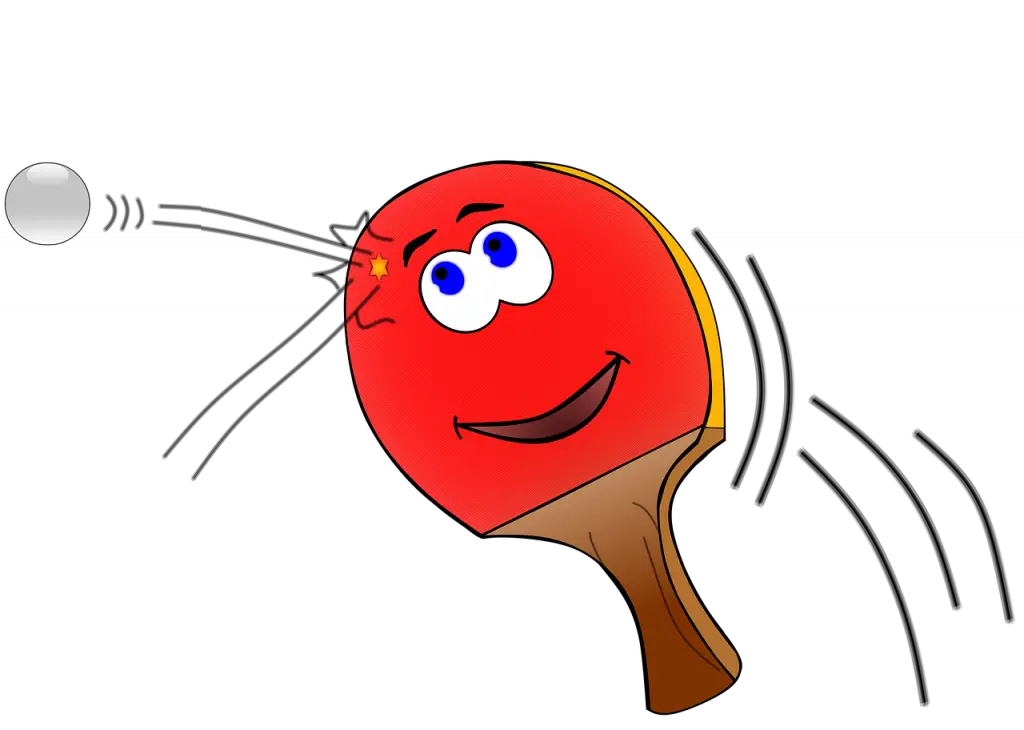If you’ve never played ping pong before, here are a few tips for having a successful game. Let’s talk about a simple, yet very important topic. Playing the perfect ping-pong game is something that we all want to do. It’s something that we all strive to accomplish.
But when I talk about playing the perfect ping pong game, what I’m really talking about is the art of playing a great ping pong match.
So I’m going to give you 10 tips you need to practice in order to be able to play the best possible ping-pong game.
Fundamental Ping Pong Techniques
Grip and Stance
The foundation of your ping pong skills begins with the correct grip and stance. There are two primary types of grips in ping pong: the penhold grip and the shakehand grip. The penhold grip is characterized by holding the paddle similarly to how you’d hold a pen. The shakehand grip is more common and involves holding the handle as if you’re shaking hands.
Tip: Experiment with both grips to find the one that feels most comfortable and natural for you. Your grip should allow for a relaxed but firm hold on the paddle. In terms of stance, position yourself slightly to the left of the center of the table if you’re right-handed (and vice versa if you’re left-handed). Keep your knees bent, and your weight centered for quick and agile movement.
Serving Strategies
Serving is an essential aspect of ping pong, as it sets the tone for the point. There are various types of serves, including topspin, backspin, and sidespin serves. Each type serves a different purpose. For example, topspin serves create a forward spin that can be difficult for opponents to return, while backspin serves can cause the ball to bounce backward, making them challenging to handle.
Tip: Practice serving with various spins and experiment with placement and deception. Your serve can be a valuable weapon in your arsenal.
Ball Control
Ball control is fundamental to ping pong, as it determines your ability to place the ball precisely where you want it to go. To improve your ball control, practice basic ball placement by aiming for specific spots on the table.
Tip: Set up targets on the table and practice hitting them consistently. As you progress, increase the distance and add movement to your target practice.
Developing Your Shots
Forehand and Backhand Techniques
Mastering forehand and backhand strokes is essential for becoming a well-rounded ping pong player. Work on the mechanics of each stroke, focusing on your hand placement and wrist action.
Tip: Practice forehand and backhand shots separately. Once you’re comfortable with each stroke, incorporate footwork and movement to use them effectively during rallies.
Mastering Spin
Spin is a crucial element in ping pong, as it can give you a significant advantage. Learn how to apply topspin, backspin, and sidespin to your shots. Practice imparting spin on the ball by brushing the paddle against it in different ways.
Tip: Experiment with the angle and timing of your paddle contact with the ball to vary the amount of spin you generate.
Smash and Loop Shots
Powerful smashes and looping shots are offensive weapons that can catch your opponent off guard. To execute these shots effectively, focus on generating speed and spin.
Tip: Work on your timing and positioning to maximize the power of your smashes and loops. These shots can be game-changers when used strategically.
Strategy and Tactics
Reading Your Opponent
One of the most crucial aspects of ping pong strategy is observing your opponent’s playing style. Pay attention to their strengths, weaknesses, and tendencies during the game.
Tip: Adapt your strategy based on your opponent’s style. If they favor one side or are weak in a specific area, exploit it to your advantage.
Placement and Angles
Strategic ball placement is a key to success in ping pong. Use the entire table to your advantage, and try to place your shots in areas that are difficult for your opponent to reach.
Tip: Experiment with angles and placements to force your opponent into awkward positions. Playing with different angles can disrupt their rhythm.
Defensive Play
While offense is essential, don’t neglect defensive skills. Learn how to block and chop the ball effectively to return challenging shots.
Tip: Focus on consistency and precision in your defensive play. Well-placed blocks and chops can turn the tide of a rally.
Mental Preparation and Game Mindset
Focus and Concentration
Mental focus is a game-changer in ping pong. Stay fully engaged in the match, and concentrate on each point. Avoid distractions and maintain your focus throughout.
Tip: Practice mindfulness techniques to improve concentration and stay in the present moment during games.
Dealing with Pressure
Ping pong can be a high-pressure sport, especially during competitive matches. Learn strategies to manage nervousness and maintain composure under pressure.
Tip: Develop a pre-game routine to calm nerves and build confidence. Visualizing successful plays and maintaining a positive mindset can also help.
Physical Conditioning and Training
Importance of Physical Fitness
Physical fitness plays a more significant role in ping pong than you might think. It contributes to your agility, endurance, and overall gameplay.
Tip: Incorporate cardiovascular exercises, strength training, and flexibility routines into your training regimen to improve your physical condition.
Practice Drills
Structured practice is essential for improvement. Incorporate a variety of practice drills into your training routine to hone your skills.
Tip: Create a training plan that includes drills for serving, returning, footwork, and ball control. Consistent practice is the key to improvement.
Other Important Ping Pong Tips You Should Look Into

1. Make sure you warm up before you play.
That is, get some cardio done and get your heart pumping before you play ping pong. If you don’t warm-up, then you could end up with an injury. This will make it very difficult for you to hit the ball and keep your balance. The muscles need to be warmed up and ready to go so that they can do what they’re supposed to do during the game.
Warm-up for about 5 minutes. It should not be too long. Warm-up by doing simple exercises that would get your heart rate up. You need to be ready to play a great game.
Don’t wait until you are tired before you start a game.
2. Master The Basics
If you’ve never played ping pong before, you might not know all the basic rules of the game. So before you go playing, you should make sure that you understand the rules of the game.
That is, what you can do and what you cannot do during a game. If you don’t know what you can and cannot do, you could get yourself in trouble. And if you’re not familiar with the game, you could end up injuring yourself.
Moreover, You should know what all the different shots are and you should be able to hit them. You should be able to get a nice serve. That’s one of the most important things you can do. If you can’t hit a good serve, then your opponents can easily outplay you. Make sure you understand all the different types of serves.
3. Keep a good rhythm.

When it comes to playing ping pong, timing is everything. You need to keep track of your timing and the timing of your opponent. If you don’t know how to read the clock, then you might not even know where you are on the court at any given time.
To do this, you need to take note of what the other player does. Do they have their racket back? Do they have their racket forward?
4. If you want to serve, learn how to do it
You need to be able to serve with good speed. It doesn’t matter if you serve for just a few seconds or if you are serving for 10 minutes. When you serve, you need to be able to control your speed.
If you want to get a great return, you have to make sure that you hit the ball as fast as you can. That’s why it’s important to control your speed. You also have to know how to make sure that you hit the ball at the right moment.
Instead, if you want to serve, you should use the lob serve.
The lob serve is one of the best ways to get your opponent out of position.
Make sure that you understand the difference between the serve and the volley. If you don’t know what they are, you’re in trouble.
Another important thing is putting spin in serve. If you can do so, you will definitely win the point. You can say, the chance is more than 90%.
5. Get a decent paddle
To be able to play a good game, you need to have a good paddle. The best paddles are the ones that have a good balance. A good balance means that there is no flex in it. You don’t want the paddle to bend or flex. If it does, then it could affect your balance.
That is, if your paddle bends, then you might not be able to hit the ball straight. If you can’t hit the ball straight, you will not be able to keep your balance.
And the most important thing is to get a nice paddle with a nice grip. If you don’t have a good paddle, then you won’t be able to control the speed of your shots. If you want to get a great paddle, you should be able to hit the ball as fast as possible.
6. It’s important to grip your paddle correctly

In a match, you will get a lot of opportunities to get your racket up to block the opponent. This is an opportunity for you to make some amazing shots.
The best way to do this is to grip the paddle properly. That means that you need to use your fingertips. You should put your middle finger and your ring finger on the top of the paddle. And the back of your hand should be against the bottom of the paddle.
When you know what your strengths and weaknesses are, you can adjust your game accordingly.
7. Learn more than one serve
You need to be able to serve from different angles. You can do this by learning how to use different serves. It doesn’t matter if you want to do a kick serve or a cross-court serve. If you can do so, you will get the opportunity to get out of the position.
Moreover, you should be able to hit your opponent off the court. You should also be able to put the ball in the right spot. To do so, you should learn how to hit your shots from different angles.
To do this, you need to practice at the net.
8. Master the four basic forehand and backhand strokes
You need to understand the importance of the forehand and backhand strokes.
This is because if you don’t have a good forehand, then it will be very difficult for you to hit the ball from the backhand. You also need to know how to hit the ball with the left and the right hand.
There are four basic strokes that you should master. You should be able to do these four strokes before you start playing a match. If you can’t do so, then you will definitely struggle.
To be able to win points, you need to be able to hit your opponent with your forehand and backhand.
To master these strokes, you will have to practice for a long time. You should understand the importance of practicing all the strokes. If you only practice one stroke, you might not be able to get the other ones right. To master them, you should use your wrist and your arm.
9. Aim For Low Returns
When you get the ball from your opponent, you should always aim for low returns.
This is because low returns will help you to control the point. And you should try to hit the ball on the ground. If you hit the ball high, you won’t be able to hit the ball to the opponent’s body.
You should also aim to hit the ball on the baseline. This will give you an advantage over your opponent. You can use this advantage to control the point.
The most important thing is to aim for low returns.
10. Master Footwork
Footwork is very important. If you don’t have good footwork, then you won’t be able to play well. You should be able to move your feet properly.
You need to be able to move properly when you are playing.
When you are trying to hit the ball, you should be able to move quickly. You should move like a boxer and a swimmer.
To do this, you should master the art of footwork. When you are playing a match, you should be able to use footwork to create space. This way, you will be able to play the ball.
It’s important to get the ball out of your opponent’s hand before you play it. If you are not able to do so, you will struggle.
11. Practice on your own

The best way to master your game is to practice on your own.
You should be able to use your imagination. That will help you to practice the shots that you want.
You should be able to improve your game.
There are many ways in which you can improve your game. You should be able to hit the ball on the ground. You should be able to move the ball more freely.
The best thing is to practice your game on a court. You should be able to do this for a long time. You should also be able to hit the ball from different positions.
Frequently Asked Questions
How do I get better at ping pong?
We have seen that you need to understand the importance of forehand and backhand strokes. You should also master the four basic strokes. When you get the ball, you should aim for low returns. You should move your feet properly.
Another important factor in improving your game is to be physically fit. You should perform exercises that improve your strength and flexibility. You should play tennis three times a week. You should practice your skills in the morning. You should avoid practicing in the evening.
What is the most important skill in ping pong?
The main skill in ping pong is to have a good understanding of the ball. You should understand how it moves. If you hit the ball well, you can control the point. But if you miss the ball, you will lose the game. You should be able to hit the ball with the forehand and backhand. It is also important to master footwork.
Summary
Mastering the art of ping pong is a rewarding journey that requires dedication, practice, and a commitment to continuous improvement. By focusing on fundamental techniques, developing your shots, strategizing effectively, maintaining mental composure, and staying physically fit, you can elevate your ping pong game to new heights.
Remember that progress takes time, and every player, regardless of their skill level, can benefit from ongoing practice and refinement. Whether you’re playing casually with friends or aiming for competitive excellence, these tips can help you become a more confident and skilled ping pong player.
Incorporate these strategies into your training routine, adapt them to your playing style, and most importantly, enjoy the game of ping pong for its countless moments of challenge and excitement. Ping pong is not just a sport; it’s a journey of self-improvement and a source of endless fun.
Are you ready to elevate your ping pong game? Subscribe to our blog for more tips, techniques, and updates on all things ping pong. Join our community of ping pong enthusiasts and take your skills to the next level.

Hi, My name is Benjamin Fink and I am the author of the ping pong reviewed blog. I am a sports person learning and sharing my knowledge with others about ping pong and other sports.
I have been playing ping pong for the last 17 years and teaching people about the game and writing new things about the game through this blog When finding something new. I have participated in serious ping pong tournaments in my country.
